Drawings of Babies Medium Size Round Slanted Upwards Eyes on a Babt
Have you ever wondered what paediatricians look for when looking into your baby's eyes before discharge from hospital? I have to say, checking a baby's eyes is one of the trickiest newborn examinations that I do as a paediatrician. To date, I have not met any newborn who would open their eyes on demand! Despite their cheekiness, we shall persevere. With this list, let me share with you what it is about the newborn eyes that we are so invested in.
1. Anatomy of baby's eyes
Yes, the first thing we as paediatricians, and I guess every parent, would like to know is whether your baby has normal external eye anatomy. We want to make sure that the structure and the size of the external eye plus the area around them looks normal, healthy and 'injury free'. Some babies may get stuck on their way out and need forceps to help with delivery. It is crucial for us to note that there is no eye injury in this scenario and to make sure that the eyes are OK the following day. In one of the images below you can see a curved forceps mark on the baby's forehead and small bruise on the upper eyelid, but no injury to the eye globe.
2. Dysmorphology – the study of unusual features!
The location and shape of the eyes, eyelids and eyebrow can give us a clue to a certain genetic condition. One of the examples is babies with Trisomy 21 or Down Syndrome who often have upward slanting of the eyelids and prominent folds of skin between the eyes. We might see unusual gaps in the structure of the eyes (coloboma), which if seen with other unusual findings might lead us into a different genetic condition.
3. The red reflex
Your clever mobile phone might automatically remove these from your baby pictures.
Paediatricians love it though when we can see these two rounded glaring red reflections from the back of your baby's eyes using our opthalmoscope (hand held torch-like device we use to look at baby's eyes). Normal red reflex indicates that there are no cataracts or tumors. The first picture below is normal, the second one shows a baby with abnormal red reflex on the left side.
4. Eye alignment and movement
When you look into your newborn's eyes in the first few weeks of life, you might notice a 'squint'. A squint is where the eyes point in different directions. Provided that there are no other concerning features, it is normal for a newborn's eyes to cross intermittently during the first few months of life as they learn to use their eyes and strengthen their eye muscles. Most squint will disappear before they turn three months of age. Some parents have noted their baby's eyes moving quickly from side to side or up and down (nystagmus) when trying to look one way or when they are trying to focus on an object. If it is persistent and quite rhythmical in nature, it would be good to take a video of this eye movement and show it to your paediatrician for them to have a look at.
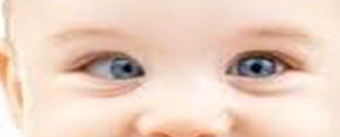
5. The colour of the iris
Parents often ask what colour the baby's eyes are, whether they are going to change and when. When we talk about 'eye colour' we assume that we are talking about the colour of the iris, that muscular part around the pupil that controls the amount of light entering the eye. Eye colour is all about genetics. It will take at least six months for the eye colour to set depending on the genetic predisposition.
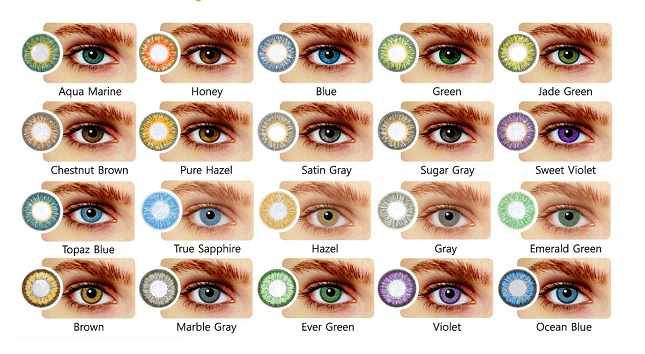
6. The colour of the sclera
To be honest, I am more interested in checking the colour of the sclera rather than the colour of the iris. Sclera is the white part of the eyes and abnormally coloured sclera can indicate abnormality or serious diseases. There are five shades of sclera colour that we could see in a newborn.
1. White, which is normal and nothing to write home about.
2. Yellow, in the case of neonatal jaundice.
Queensland Health has additional information on jaundice in newborn babies.
3. Red, in the case of subconjunctival hemorrhage.
Subconjunctival hemorrhage is due to the rupture of small blood vessels located beneath the eye. It sounds scary to read but it is actually a very common finding in newborn babies because of pressure placed on their head during contractions. Similar like when you have a bruise, these subconjunctival hemorrhage will slowly disappear in a couple of days, leaving the white of the eyes white again.
4. Pink, in the case of inflammation, which can be due to infection (conjunctivitis) or due to chemical irritation (e.g. soap, smoke).
Conjunctivitis in the newborn period might be caused by bacteria or viruses. The culprits pathogens are normally picked up on the way out from the womb. Pink sclerae together with very purulent eye discharge and/or very swollen eyes and/or vesicles on the eyelids within the first week of life are worrying and need to be addressed medically. The three main organisms that we worry about are gonorrhoea, chlamydia, and herpes virus. Please inform your paediatricians if you have had these infections in the past or during pregnancy.
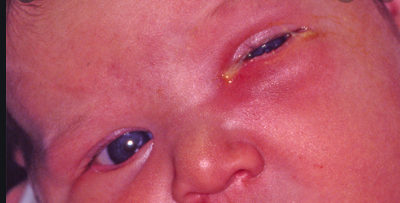
5. Blue, in the case of RARE inherited connective tissue and bone disorder.
7. Eye discharge
Not all eye discharges in babies are due to infection! Intermittent small amounts of eye discharge with normal looking sclera and eyes are normally due to a blocked tear duct. Many newborn babies are affected by this condition. The treatment is with 'eye toileting', gently wipe your baby's eyes with swabs soaked in cooled boiled water or pre-made salt water (saline) solution, starting from the nose side of the eyes outward multiple times in the day until it clears. The blockage can come and go and may affect one or both eyes simultaneously. It can recur intermittently for up to one year of age. Babies with blocked tear ducts may have teary eyes even when they are not crying.
Some people have been told to use expressed breast milk instead of water to clear the eyes. I actually prefer for the precious breast milk to be drunk by the baby rather than for eye toileting as regular cleaning with water does the same job.
Massage of the tear duct from the corner of the eye down the outside of the nose can encourage the flow of lacrimation through the tear duct . This can be done five to six times with each feed. At least this is a time of the day where you sit down and may be more likely to remember to do this.
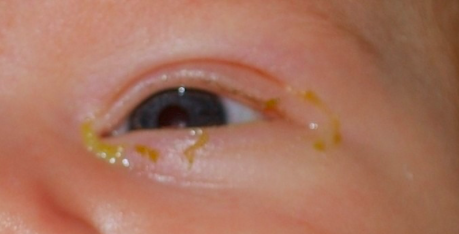
8. Eyelids
Eyelids are the commonest place for a newborn to have birthmarks. It is important to note the type of birthmarks, as some birthmarks involving the eyelid can grow in size and affect vision development later on. The most commonest birthmark affecting the eyelids are the 'salmon patches' similar to the image below. Salmon patches are benign and will normally disappear by one or two years of life.
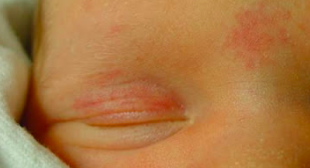
Another thing that we might find in our examination is ptosis or droopy eyelids. Droopy eyelids in newborn babies will need further examination, monitoring and follow up to ensure that it is not related to muscular or nerve problems.
9. Vision
On their day one of life, the distance that a newborn baby can see is about 30 cm, just enough for them to look at your face when you hold them in your arms. Your newborn baby would be looking at you but will not smile back at you or try to follow your every move though. This is because their vision is still fuzzy and colourless. By the time your baby comes to see us for their six week check, I am sure you will be telling us how clever your baby is in tracking your faces and reacting to your facial expression with a smile!
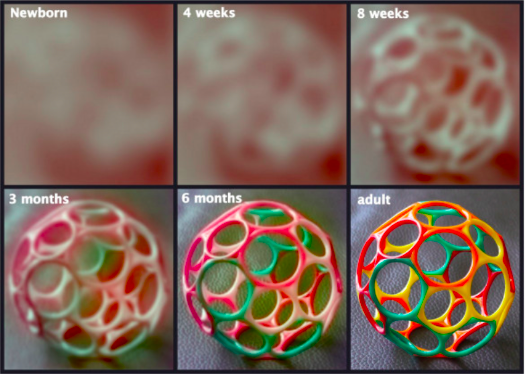

Dr Fifi Djatmiko
If you feel you require paediatric advice for your child please contact us.
For more qualified, easy-to-understand specialist paediatric information visit Paedicare's blog.
Drawings of Babies Medium Size Round Slanted Upwards Eyes on a Babt
Source: http://www.paedicare.com.au/babys-eyes/
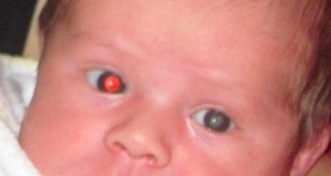
0 Response to "Drawings of Babies Medium Size Round Slanted Upwards Eyes on a Babt"
Postar um comentário